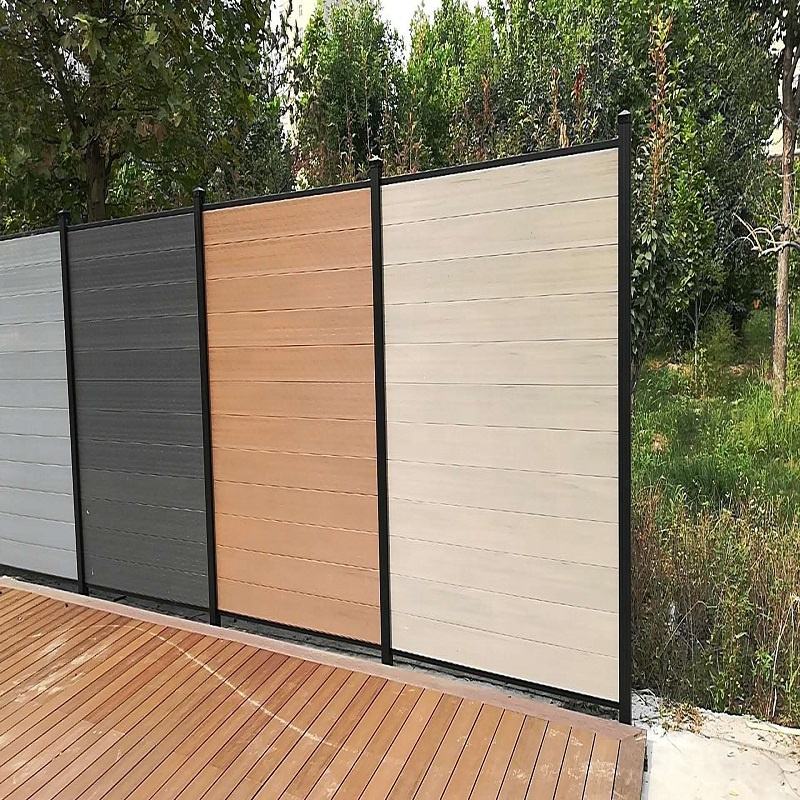
Introduction to Modern Fencing Solutions WPC (Wood-Plastic Composite) fencing
June 11, 2024
The Future of Automotive Design: WPC Materials in Car Components
June 14, 2024”
Creating Your Dream Hot Tub Deck Oasis
Picture this: You’re soaking in warm, bubbling water under the stars, your deck transformed into a personal retreat. Sounds amazing, right? I thought so too when I first considered adding a hot tub to my backyard setup. But here’s the thing you can’t skip – that dreamy soak comes with serious weight considerations. Literally.
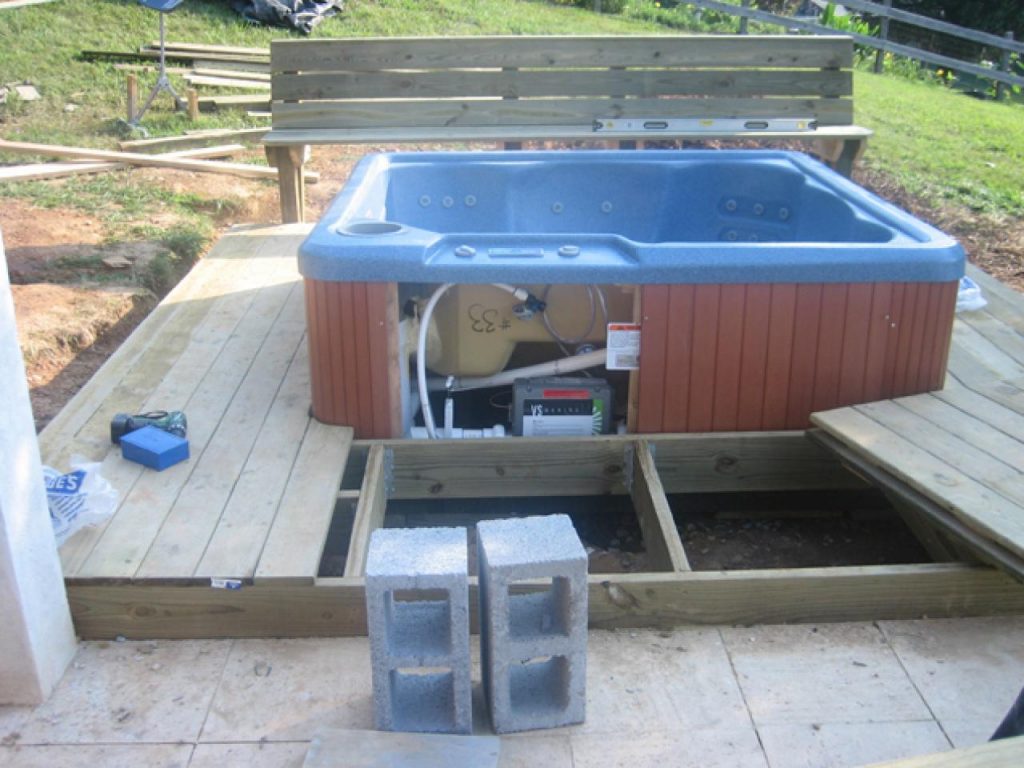
From my own experience building a cedar deck spa area last summer, I learned that water weighs about 8.3 pounds per gallon. Do the math on a typical 400-gallon hot tub and you’re looking at over 3,300 pounds of water weight alone – before adding people or the tub itself! That’s like parking a small SUV on your deck.
The secret sauce? Smart preparation. I made the mistake of assuming my existing deck could handle it during my first DIY attempt. Big wake-up call when we noticed sagging joists! Now I always recommend starting with a professional assessment. This guide saved me during my second, successful attempt.

Location matters more than you’d think. Want that Instagram-worthy sunset view? Sure, but remember plumbing and electrical access. My neighbor learned this the hard way when they had to rip up part of their beautiful new deck for wiring. Pro tip: Position near existing utilities if possible.
Material choices make or break your project. Composite decking might cost more upfront, but when I compared maintenance time versus traditional wood? Worth every penny. Pressure-treated pine needs annual sealing, while my composite section just needs occasional scrubbing.
Here’s something most guides don’t mention: Think about future repairs. Leave at least 6″ clearance around the tub – trust me, you’ll thank yourself when the pump needs servicing. And those beautiful stone pavers around my hot tub? They help with drainage and prevent slippery surfaces.
Final piece of advice? Don’t rush the planning phase. It took me three weekends just to finalize the layout and get permits. But when you’re finally enjoying that first soak surrounded by your handiwork? Pure magic. Just make sure your deck’s bones can handle the love!
Let me tell you, that moment when you imagine soaking in your deck hot tub at sunset? Pure magic. But here’s the reality check I learned the hard way – decks can be sneaky about their limitations. You know what keeps me up at night? The thought of that beautiful tub becoming a watery wrecking ball.
Here’s the deal: An average 4-person hot tub becomes a 5,000-pound monster when filled. That’s like parking three grand pianos on your deck! I always tell my neighbors to look for the telltale signs – those slightly sagging boards near the house connection, or cracks that look like tiny lightning bolts in the wood. Found any of those? Stop right there and book a pro inspection. It’s cheaper than replacing your entire deck (or explaining to your insurance why there’s a hot tub-shaped hole in your backyard).

Remember my buddy’s ‘quick DIY deck refresh’ last summer? Turns out the support posts were rotting from the inside like a bad apple. His ‘spa day’ almost became a basement flood day! The smart move? Get a structural engineer to do the math – they’ll check joist spacing, footing depth, all that boring but crucial stuff. Pro tip: Snap photos of your deck’s underside before calling the pros. It’ll save them time and you money.
Oh, and location matters more than you think! That picturesque corner spot? Might need extra cross-bracing. Those composite decking boards everyone loves? Some can’t handle constant moisture. My rule of thumb: If you wouldn’t park a pickup truck there, don’t put a hot tub there. When in doubt, check with the lumber experts – better safe than swimming in regrets!
When figuring out where to place your hot tub on the deck, I always tell friends it’s like choosing the perfect spot for your favorite lounge chair – except this one holds thousands of pounds of water! You’ll want to think about more than just the Instagram-worthy view (though that’s important too). Let’s break it down real quick:
First off, how close should it be to the house? I made the mistake of putting mine too far out initially. Big surprise – nobody wants to trek through snow in bathrobes! But don’t crowd it either. Leave enough space for maintenance access – trust me, you’ll thank yourself later when fixing a leak.
Privacy is another biggie. Ever notice how hot tub conversations get personal? Maybe add some tall plants or a privacy screen. Oh, and check where water splashes might land. My neighbor’s prized rose bushes weren’t thrilled with my first placement choice!
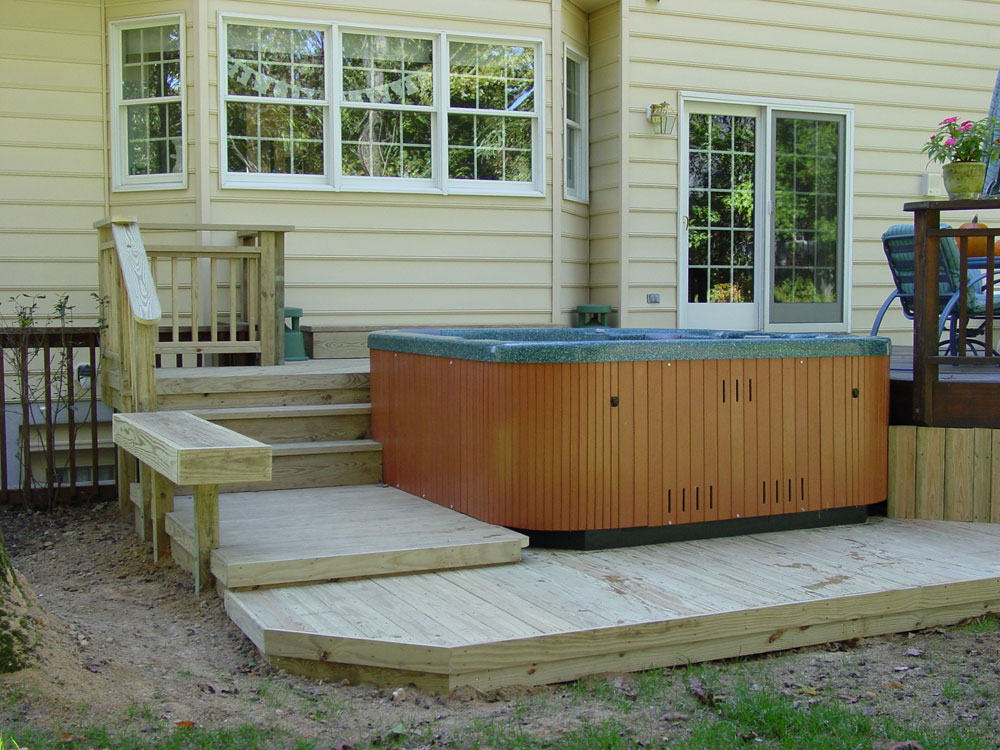
Here’s where most DIYers slip up: assuming their deck is strong enough. I once helped a buddy whose deck sagged like a hammock after installation. Pro tip: Have a structural engineer check your joists and footings. They’ll spot issues you’d never notice, like hidden rot or undersized beams.
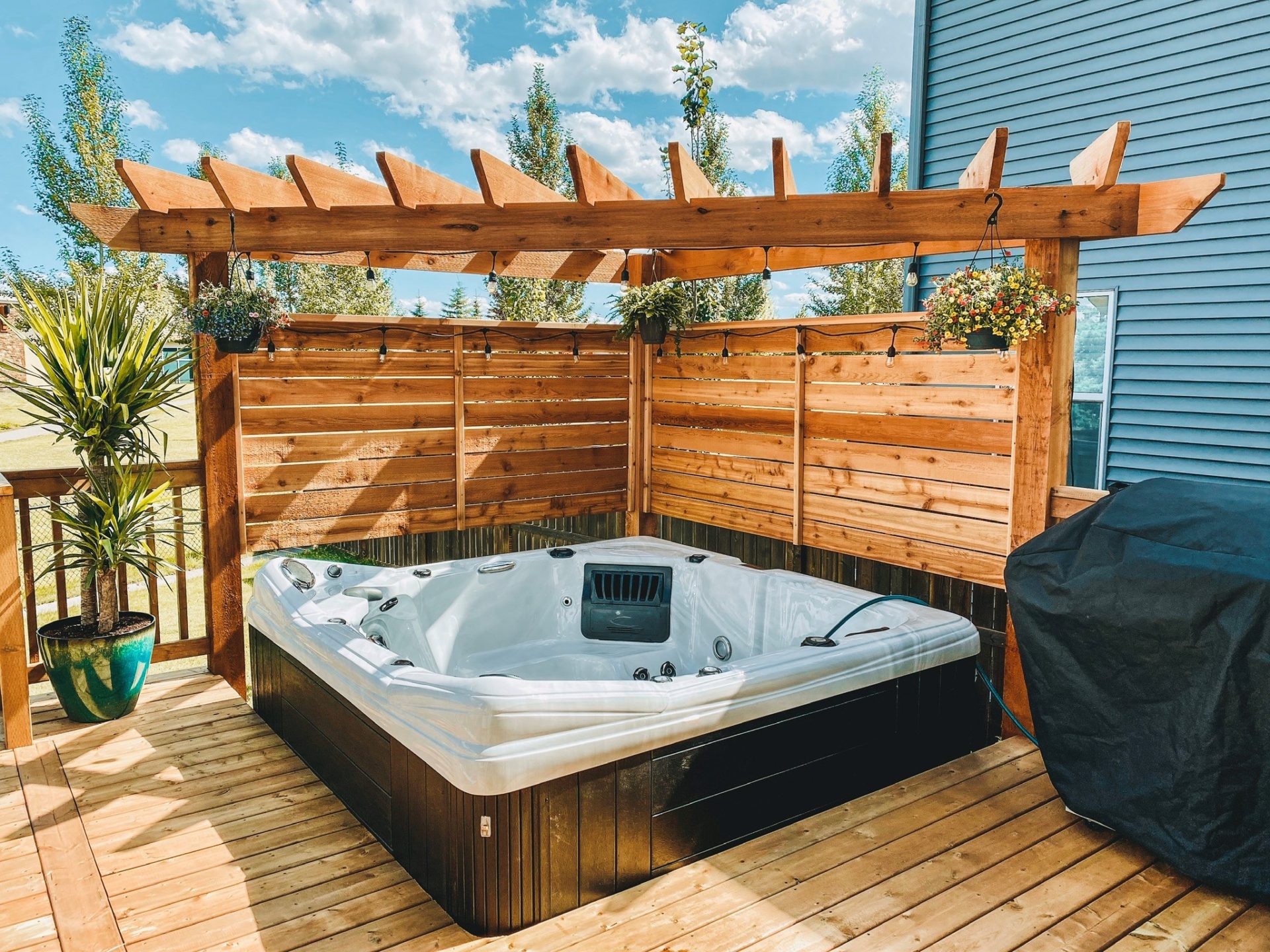
Don’t forget about overhead coverage! That retractable awning seemed genius until winter storms hit. Now I swear by permanent roofing that still lets me stargaze. Last thing – local building codes. My town requires railings around elevated tubs, but yours might differ. A quick chat with your local deck specialist could save fines down the road.
Remember: Good planning turns ‘Oh no’ moments into ‘Ahhh’ moments. What’s your biggest worry about deck installations? Drop me a comment below – I’ve probably faced it myself!
When it comes to choosing your perfect hot tub companion, you’ve got more options than flavors at an ice cream shop! Let me walk you through the three main contenders I’ve seen work best for deck installations. First up are the in-ground spas – these built-in beauties blend seamlessly with your deck like they grew there naturally. They’re the luxury sedan of hot tubs, perfect if you’re going for that permanent resort-like feel.
Then there’s my personal favorite – rotomolded tubs. These rugged polyethylene warriors can handle anything from rowdy kids to harsh weather. I helped install one for my neighbor last summer, and let me tell you, that rotomolded beast is practically indestructible! They’re lighter than traditional models too, which makes deck installation less of a structural headache.
Don’t overlook portable inflatables either – they’re the Swiss Army knives of hot tubs. Perfect for renters or anyone who wants flexibility (no pun intended!). I’ve moved mine from deck to patio to backyard three times this year alone. Check out the different styles in this comparison shot and this materials breakdown.
Here’s the real talk: Your choice comes down to how you’ll actually use it. Weekend warrior? Maybe go portable. Entertaining queen? In-ground screams luxury. For most homeowners, rotomolded hits that sweet spot between durability and affordability. Whatever you choose, remember to check out these deck reinforcement tips before installation – trust me, you don’t want to learn about weight limits the hard way!
Let me tell you, choosing decking materials for your hot tub area is like picking shoes for a marathon – looks matter, but performance is everything. I remember helping my neighbor last summer agonize over this exact decision. We discovered composite decking works wonders if you hate maintenance (who doesn’t?), though the upfront cost might make your wallet wince. Then there’s good old pressure-treated wood – the budget-friendly option that asks for annual TLC. But here’s the kicker: did you know cedar naturally resists rot? I used it around my own spa setup and barely touched it for three years!
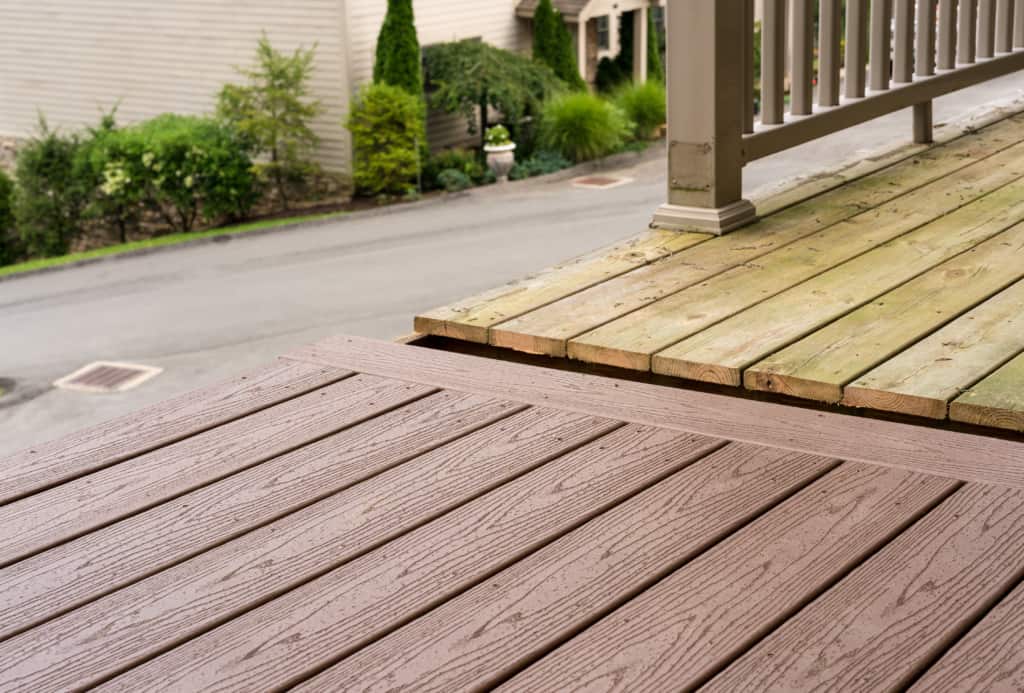
Now, here’s something I learned the hard way – tropical hardwoods like Ipe look stunning but require special handling. My contractor friend at Plastory still ribs me about the time I tried installing those iron-hard boards without proper tools. Pro tip: Factor in installation costs before falling for that rich, mahogany-like appearance. Ever wonder why some decks around hot tubs still look pristine after five years while others warp? It often comes down to material choices matching your climate and lifestyle.
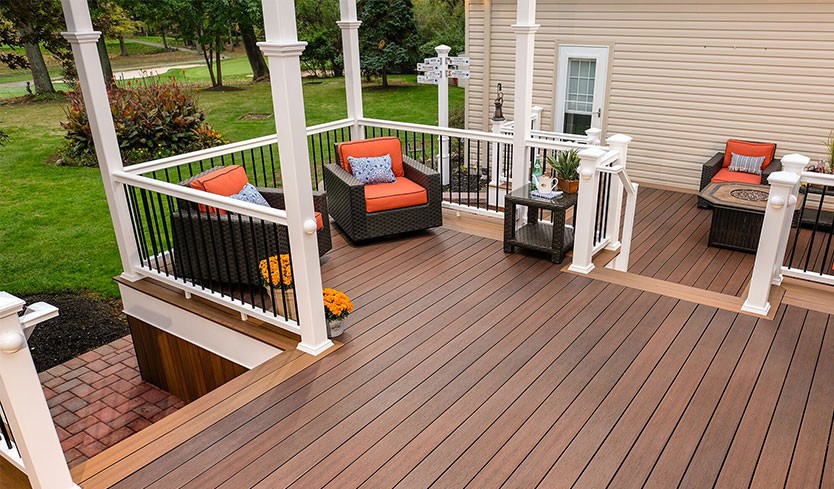
Here’s the real talk – composite’s fade-resistant colors saved my bacon when my kids tracked chlorine everywhere. But if you’re going for that classic wood warmth, cedar’s aromatic scent while soaking might just seal the deal. Whatever you choose, make sure it can handle constant moisture and foot traffic. Trust me, there’s nothing worse than realizing your beautiful new deck can’t handle post-soak drips!
When it comes to installing a hot tub on your deck, you’ve got three main paths to consider – and let me tell you, each has its own personality! The ground-level option is like your reliable old friend – straightforward but needs proper drainage planning. I’ve seen folks save thousands going this route, but you’ll want to watch out for water pooling after heavy rains.
Then there’s the above-ground style that’s become really popular in suburban neighborhoods. It reminds me of installing a giant aquarium – you get better accessibility for maintenance but need to ensure your deck can handle that concentrated weight. Last summer, my neighbor Jerry learned this the hard way when his temporary setup started sagging!
The real showstopper is the recessed installation. Picture building a custom nest for your spa that blends seamlessly with your decking. While it’s definitely the most eye-catching option (perfect for those Instagram-worthy backyard shots), it requires serious structural planning. You’ll want to consult a pro like the team at Plastory to get those support beams just right.

Each installation type dances differently with practical considerations. Ground-level setups need excellent drainage systems – I usually recommend adding a slight slope and channel drains. The elevated options? They’re easier to service but might require safety railings if you’ve got kids around. And don’t even get me started on material choices! That gorgeous cedar decking might look perfect around a recessed tub, but requires more maintenance than composite materials.
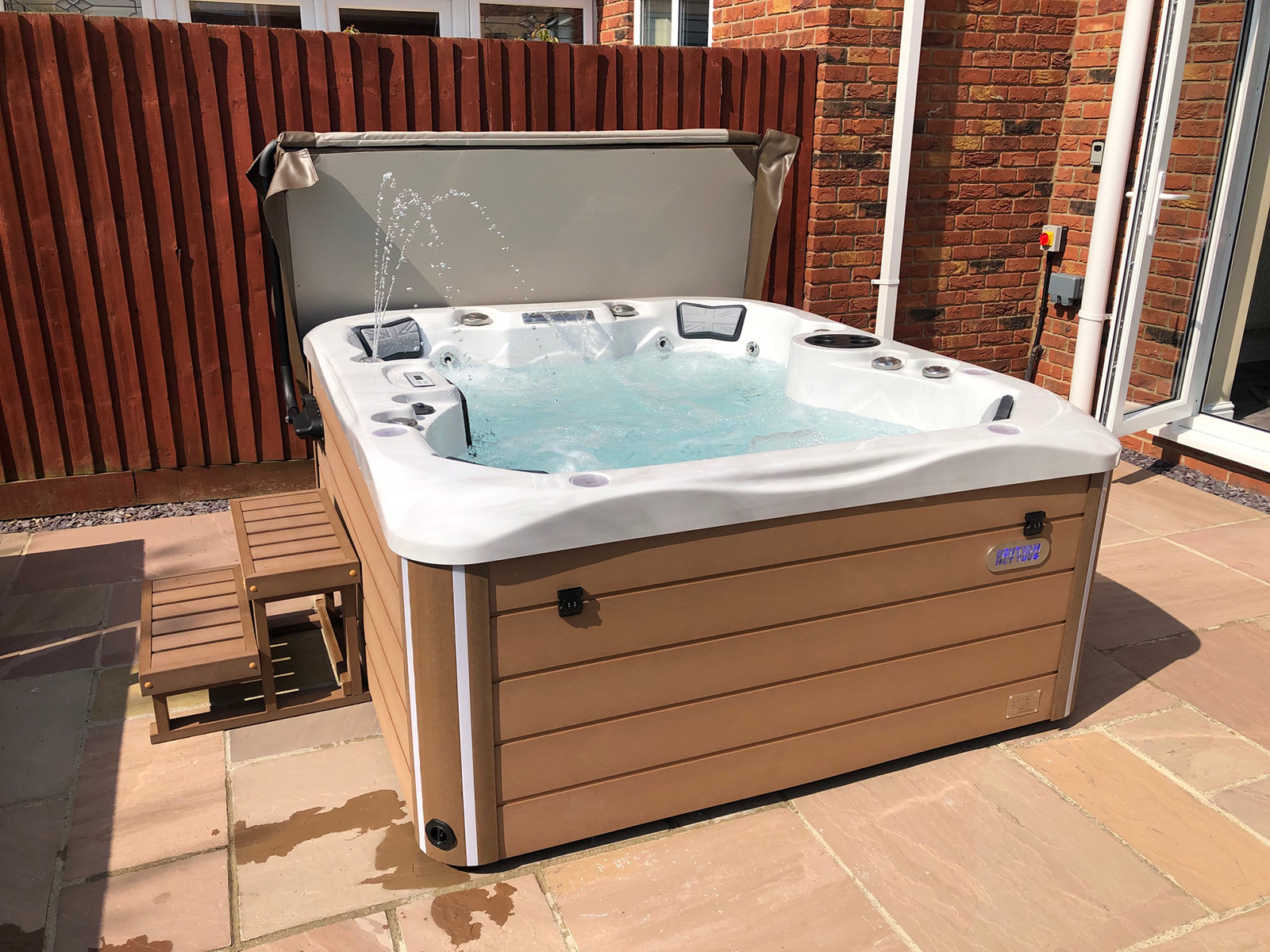
Here’s a pro tip I learned from a contractor buddy: Your installation choice should match your long-term plans. Planning to move in 5 years? Maybe go simpler. Creating your forever home? That custom recessed job could be worth the investment. Whatever you choose, make sure to account for future maintenance access – nobody wants to dismantle their deck to fix a pump!
Let me walk you through the real-deal process of creating a hot tub-ready deck that won’t give you sleepless nights. Having built my own spa deck last summer, I learned a few hard lessons worth sharing. You know what they say – measure twice, cut once, but with hot tubs, it’s more like calculate five times and build once!
First off, site preparation is where most folks slip up. I nearly made this mistake myself – don’t just clear the area, dig test holes to check soil composition. That hidden clay layer I discovered? Could’ve been a drainage nightmare! Pro tip: Use landscape fabric under gravel base to prevent weed growth through your deck boards.
 When setting footings, go deeper than local frost lines. My neighbor’s ‘quick-set’ concrete tubes shifted after one winter – learn from his $3,000 repair job! For hot tubs, I recommend pouring concrete piers at least 16″ diameter. Wait, does that sound overkill? Trust me, when that tub’s filled with 500 gallons and six adults, you’ll thank me.
When setting footings, go deeper than local frost lines. My neighbor’s ‘quick-set’ concrete tubes shifted after one winter – learn from his $3,000 repair job! For hot tubs, I recommend pouring concrete piers at least 16″ diameter. Wait, does that sound overkill? Trust me, when that tub’s filled with 500 gallons and six adults, you’ll thank me.
Here’s where I got creative: The hot tub pad. Instead of plain concrete, I embedded radiant heating cables (from plastory.com) for winter use. Game changer! Whether you use reinforced concrete or pre-cast pads, ensure 1-2% slope for drainage. Nobody wants a mosquito pool under their deck!
Attaching the ledger board? This is marriage material – literally. My contractor friend still teases me about using triple the required lag bolts. But guess what? When that nor’easter hit last winter, my deck didn’t budge. Use galvanized hardware and don’t skip the flashing – rot is a silent deck killer.
For support posts and beams, double up those 6×6 treated posts. I used adjustable steel post bases (worth every penny) for perfect leveling. The beams? Go with #1 grade lumber – those few extra bucks prevent sagging over time. Remember, your deck is only as strong as its weakest joint!
Now the fun part – deck joists and blocking. Space joists 12″ on center maximum for hot tub areas. I used joist hangers AND screws AND construction adhesive. Overkill? Maybe. But watching eight people soak without a creak? Priceless. Add solid blocking between joists every 4′ – it makes the deck feel rock-solid.
When laying boards
Final thought? Build service access panels into your design. When my pump failed at midnight last New Year’s Eve, that 18×24″ hatch was my salvation. Smart planning beats emergency demolition any day! Don’t overlook the finishing touches that’ll make your hot tub deck both functional and inviting! From my experience, creating proper service access panels is something most homeowners regret skipping. Imagine needing to replace a pump motor and realizing you have to dismantle half your deck! I always recommend leaving at least 18″x18″ removable sections near equipment areas – maybe use matching deck boards with hidden hinges for seamless access. Safety features deserve more attention than just slapping on some railings. Textured surfaces around the tub prevent slips better than regular decking – I’ve seen people use everything from composite materials with grip patterns to strategically placed stone mosaics. Don’t forget lighting! Low-voltage LEDs along steps and handrails aren’t just pretty – they’re literal lifesavers for midnight soaks. Privacy-wise, I’m a big fan of living screens over solid fences. Fast-growing arborvitae or decorative grasses soften the space while blocking neighbors’ views. One client even trained climbing hydrangeas up a trellis system – gave them seasonal interest and perfect privacy by summer. Pro tip: position fragrant plants like gardenias upwind from your soaking spot! Here’s a mistake I made on my first deck build: forgetting about microclimates. That gorgeous west-facing location? Turns into a wind tunnel every afternoon! Now I always suggest observing the site for a few days before finalizing placement. Maybe add a retractable windscreen if you can’t avoid breezy spots. Ever tried moving a 300-pound pump through a narrow deck opening? Exactly why service access matters! One buddy learned the hard way when his equipment failed mid-winter – had to chainsaw through his brand-new cedar decking. Don’t be like Mike! Let me tell you, installing a hot tub on your deck is like adding an 800-pound gorilla to your backyard party – it better be one strong dance floor! Through trial and error (including my neighbor’s embarrassing deck sag incident), I’ve learned that nailing this project comes down to three non-negotiables: smart planning, bombproof materials, and obsessive attention to detail. Get these right, and you’ll be soaking in style instead of making emergency contractor calls. Here’s the real talk from my experience: The magic happens in the prep work. Spend a weekend reinforcing joists with galvanized steel brackets. Spring for composite decking near the tub area – your future self will thank you during cleanup. And for Pete’s sake, leave easy access panels for plumbing repairs! Follow these gritty realities instead of Pinterest fantasies, and you’ll create a spa-worthy retreat that lasts. Want that magazine-worthy backyard oasis? It’s simpler than you think. Choose rotomolded tubs if you’re budget-conscious (they’re surprisingly durable), and always – I mean always – consult a structural engineer before breaking ground. Your deck will thank you with years of stress-free soaks, and you’ll avoid becoming the neighborhood cautionary tale. Now who’s ready for a test soak?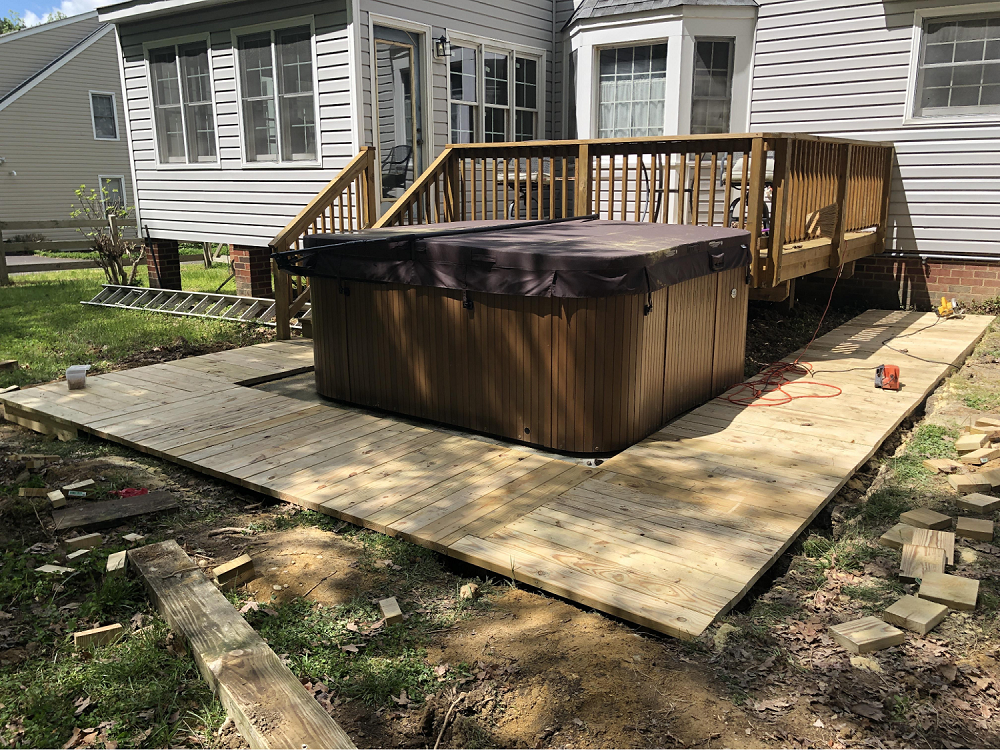 Whether you’re DIY-ing or hiring out, remember: A hot tub deck is living architecture. It needs to handle splashes, snow loads, and spontaneous dance parties. Take it from someone who’s been there – build it stout, build it smart, and you’ll enjoy those soaks worry-free for decades!
Whether you’re DIY-ing or hiring out, remember: A hot tub deck is living architecture. It needs to handle splashes, snow loads, and spontaneous dance parties. Take it from someone who’s been there – build it stout, build it smart, and you’ll enjoy those soaks worry-free for decades!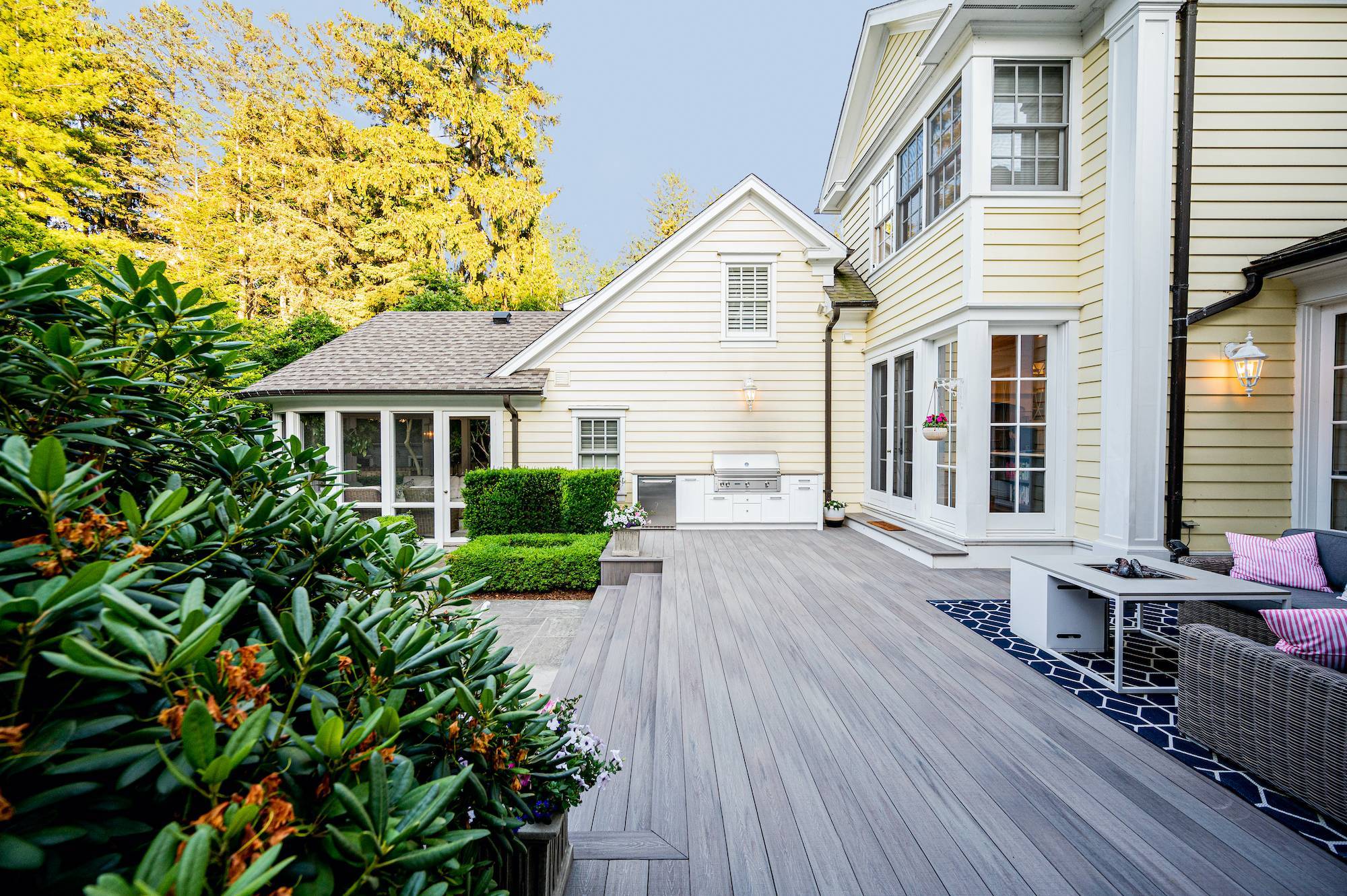
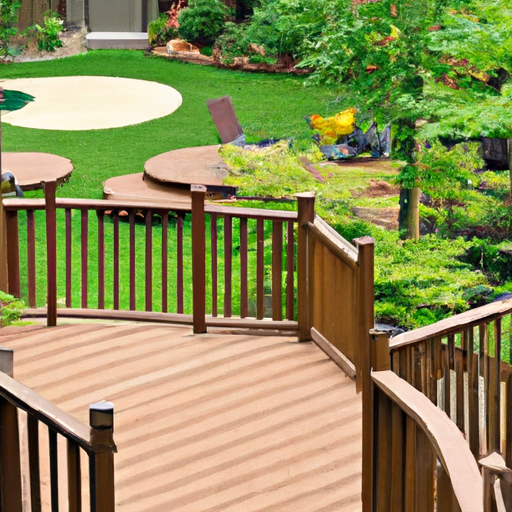
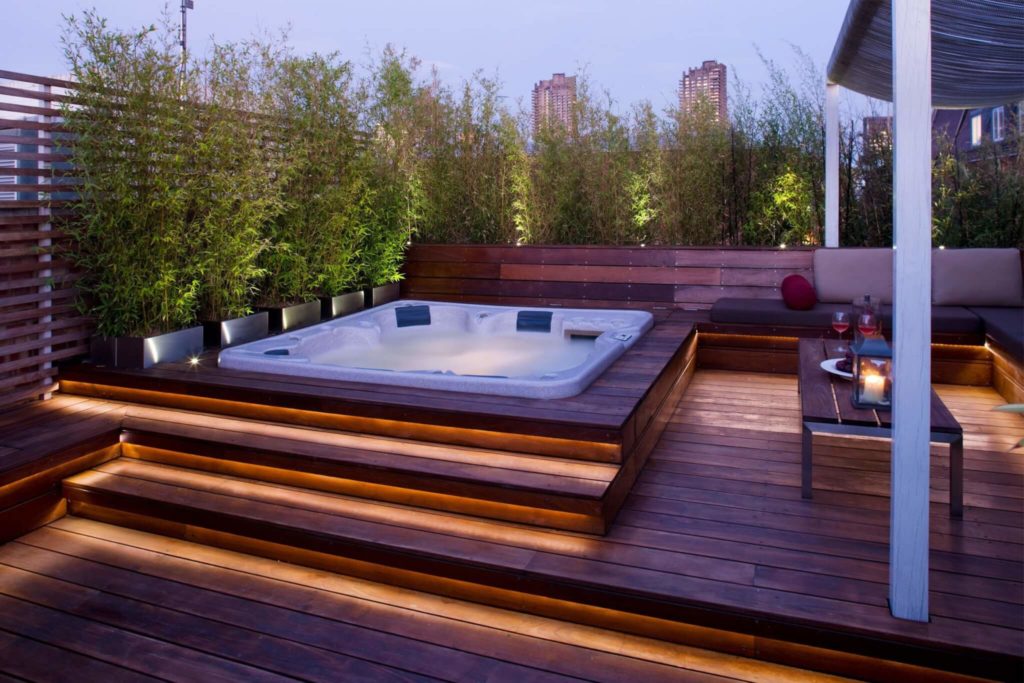 Picture this: You’re sipping margaritas in your bubbling oasis as twilight paints the sky. This dream becomes reality when you treat your deck like it’s supporting a small car filled with water. I always tell friends – don’t just eyeball those support beams! That gorgeous cedar decking you love? Make sure it can handle constant moisture without warping like my cousin’s failed experiment.
Picture this: You’re sipping margaritas in your bubbling oasis as twilight paints the sky. This dream becomes reality when you treat your deck like it’s supporting a small car filled with water. I always tell friends – don’t just eyeball those support beams! That gorgeous cedar decking you love? Make sure it can handle constant moisture without warping like my cousin’s failed experiment.
